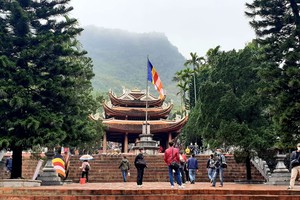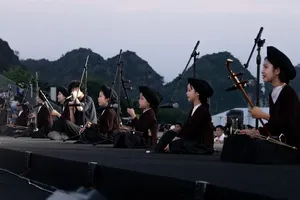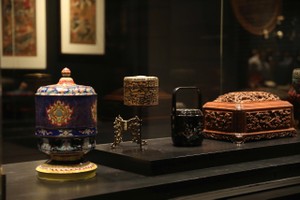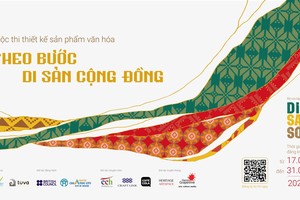For many residents in the Central Highlands’ Truong Son area, food is not just a matter of subsistence, it is filled with ritual and tradition. Locals here have always lived off the land, resulting in a unique cuisine full of fresh, earthy flavors and hidden delights.
Unlike most urban people, who are far removed from the food production process and purchase their meals in supermarkets, Central Highlands residents have a very close relationship with nature. They cultivate nearly all their own crops, raise livestock, hunt, and gather herbs and other items from the mountains and rivers.
People here grow their own rice, cassava, maize, and potatoes, and raise cattle, poultry, fish, and shellfish. From these foundational ingredients, locals create a veritable cornucopia of traditional specialties, many of which are served during holidays.
Scrumptious buffalo dishes
One of the most prominent foods in Central Highlands cuisine is buffalo meat. The animals are usually killed as part of a traditional, sacrifice ritual. Locals believe that once a buffalo has been killed in this manner, its meat becomes imbued with spiritual energy.
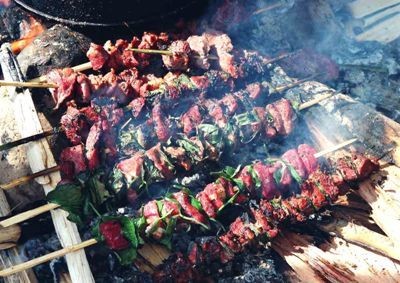
The animals are considered extremely valuable as they are large enough to feed an entire village. The most delectable parts of the buffalo are said to be the organs, while another popular dish consists of buffalo meat cooked in bamboo shoots to preserve the natural flavors.
Considered equally delicious is a meal of grilled buffalo meat. The meat is chopped into small pieces and rolled with wild betel leaves. The rolls are then placed on skewers and grilled over hot coals. In addition, the bones and organs can be mixed with fresh forest herbs to create a fragrant, tasty soup that is especially popular with children and the elderly.
Central Highlands residents also use traditional methods of processing and preserving meat for later use. Accordingly, the meat is torn into long slabs and hung above hot coals until dry. It is then stored in bamboo shoots with covers placed on the ends. When guests visit, residents will remove the meat, grill it slightly, and cut it into smaller chunks to cook with vegetables, rice or sliced cassava.
Dishes prepared with animal skins from buffalo, deer and boar are also specialties of the region. Locals slice the skin, without removing the hair, into long pieces and dry them thoroughly before hanging in a kitchen for later use.
When needed, the skins are seared and tenderized, the hairs are shaved off, and the slices are chopped up and put in a cooking pot. When the skin is soft and well-done, spices and forest herbs are added.
Luscious Lam rice
A sticky- rice dish known as Lam rice is another popular fare in the Central Highlands region. In this specialty, regular or glutinous rice is first soaked in water to soften and then sealed with banana leaves inside bamboo shoots to cook over a fire. The cook will remain near the fire, periodically turning the shoots upside down until the tube’s contents begin to boil.
Before serving, the hard outer bamboo layer is removed, leaving only the inner core. The host may then cut off the inner layer as well, revealing the entire rice log, or guests may opt to do it themselves. However, diners normally enjoy peeling back the layer themselves to unveil the silky white bamboo tissue and the delectable, sweet rice inside.
During ethnic holidays, the same type of bamboo shoots are also used to cook fish dishes. About a week before Tet (the lunar New Year), locals often organize collective fishing trips in big rivers. Several types of tree bark are used to help catch fish and embankments may be altered to lower water levels to make fishing easier.
In small streams, women and children scoop up fish with nets. The fish are then grilled or steamed, or dried and placed in bamboo shoots for later use. Seafood can also be cooked inside bamboo shoots until the outer layer is burnt, and the fish is then sun-dried.
Pepper and cakes of the Co Tu
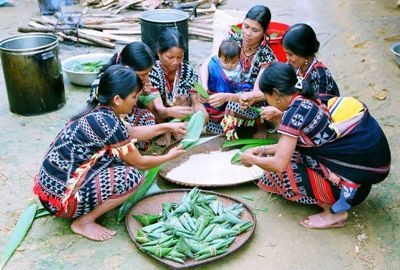
Highland cuisine is also known for its exotic peppery flavors. Forest pepper is a spice used in many ethnic dishes of the local Co Tu peoples. The seasoning is added to accentuate the flavour of a host of dishes including boiled stream fish in bamboo shoots; lieng fish fried golden brown; or grilled chicken, squirrel, boar, or pork.
Forest pepper can be added directly onto foods when preparing the dishes, or be ground into a mixture with salt. This is the primary condiment of the Co Tu. Just a little pepper added to any meal creates a very special taste that is spicy, yet less hot than regular chili peppers.
During Highlands festivals, the Co Tu often prepare another delicacy known as Cuoc cake. It is also called buffalo horn cake as its shape resembles a pair of buffalo horns. The popular treat is wrapped in “dot” leaves, which grow abundantly in the forest. Hence, the specialty is also sometimes called dot cake.
The wrapping is similar to that of the Kinh people's U cake, but lacks its green bean filling. When freshly cooked, the cake is fragrant, sticky, and the outer layer is stained with the green hue of the dot leaves. After several days, when the cake dries up and hardens, the Co Tu people grill them over charcoal to make the cake soft and fragrant again.
These traditional foods and many more of the Central Highlands people are renowned for both their unique taste and high nutritional content. Such dishes are indeed a hidden gem in the culinary treasures of ethnic minorities in the country.








